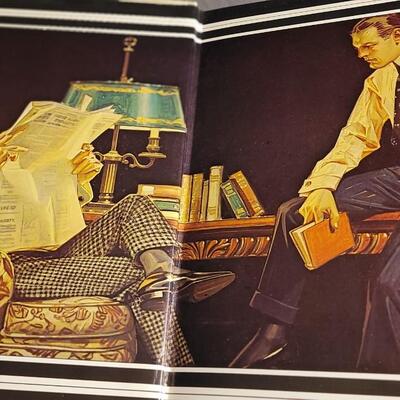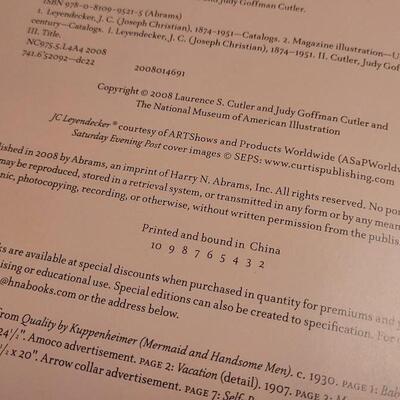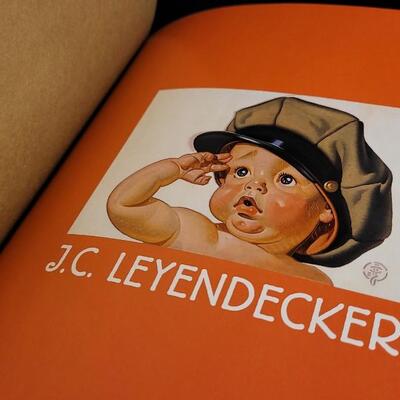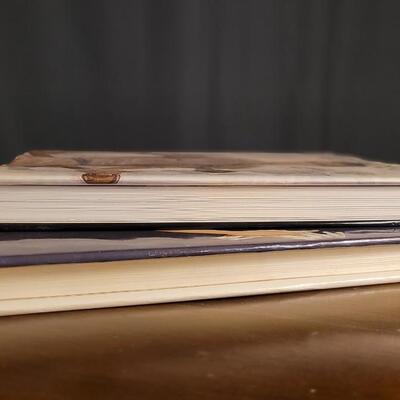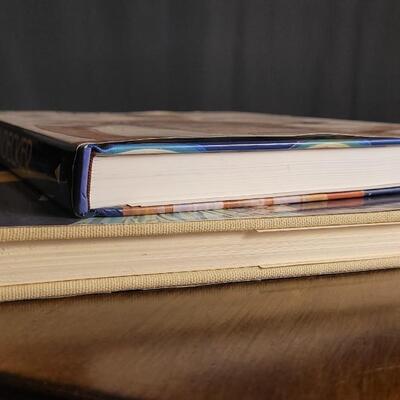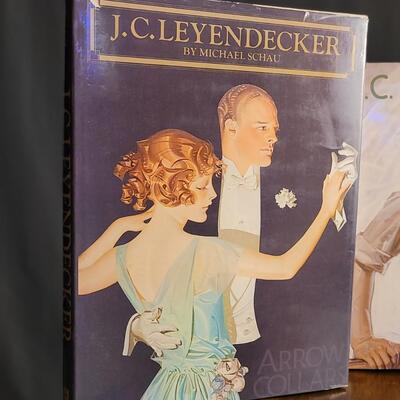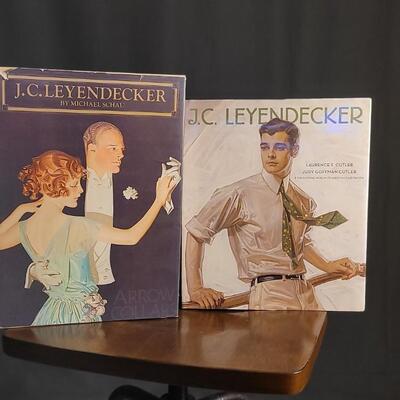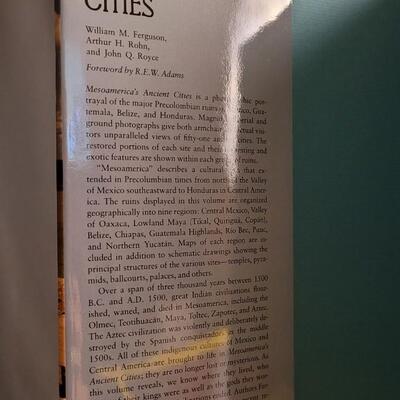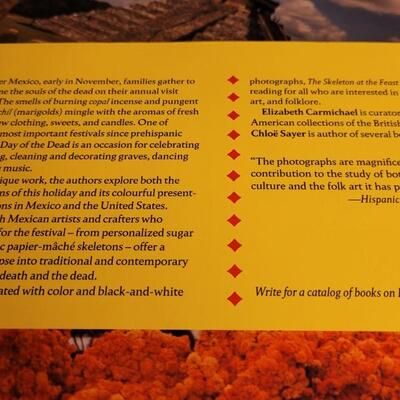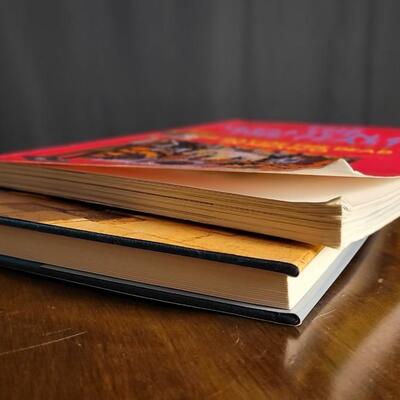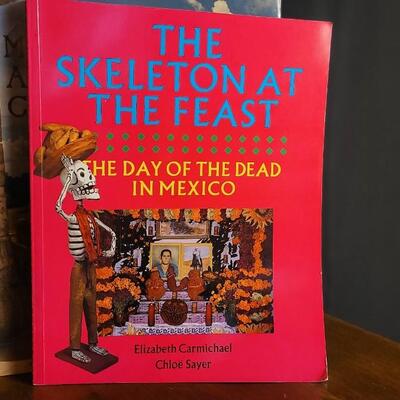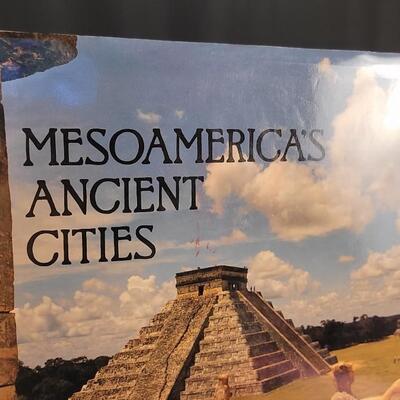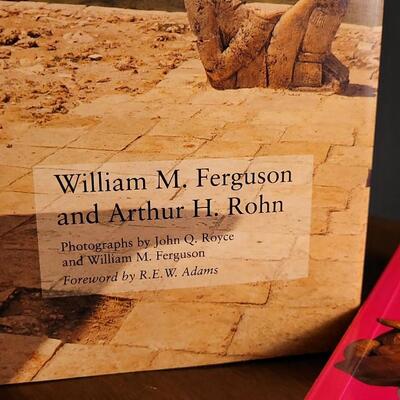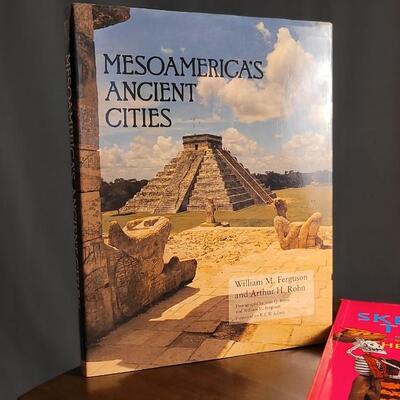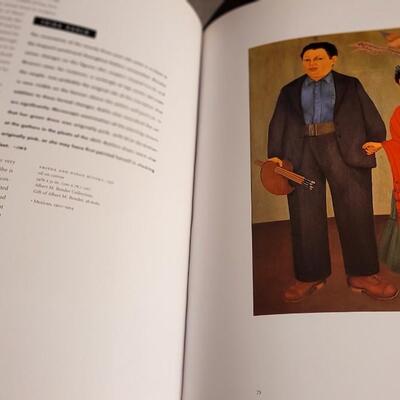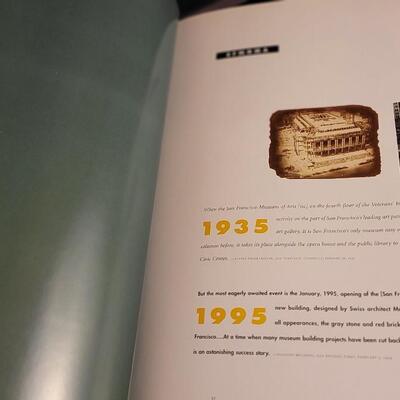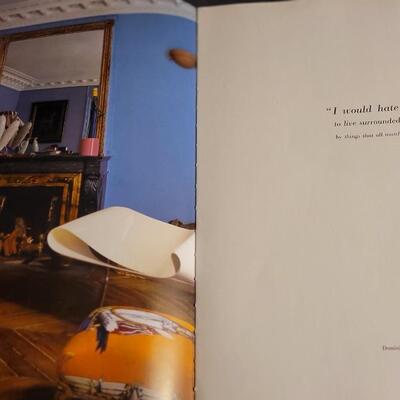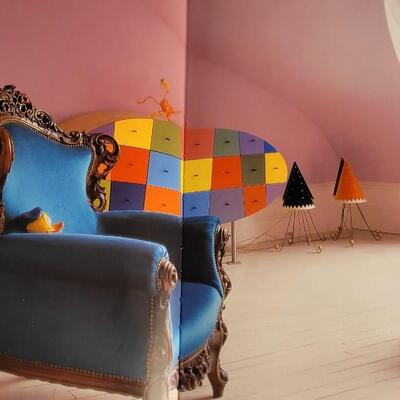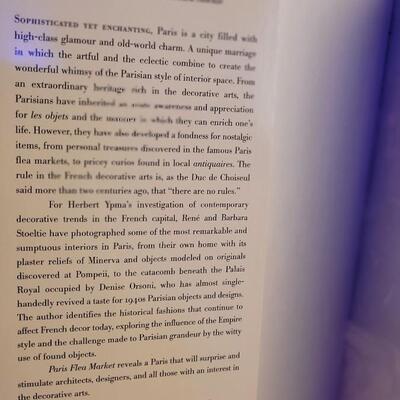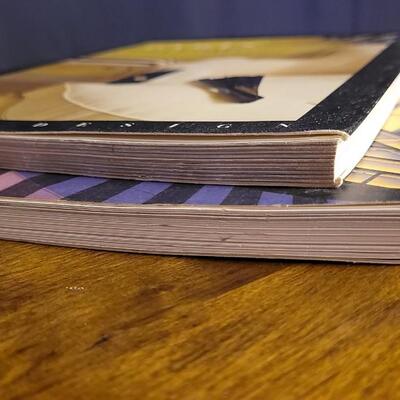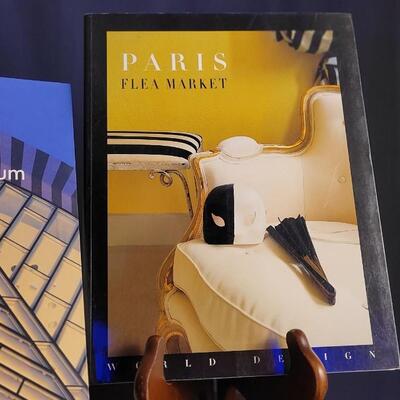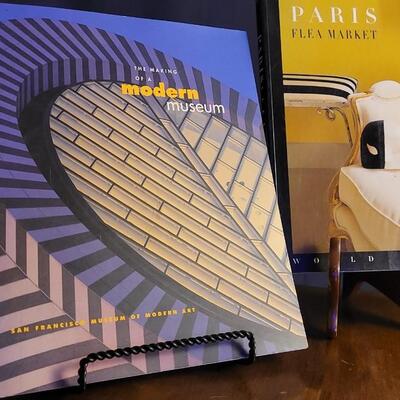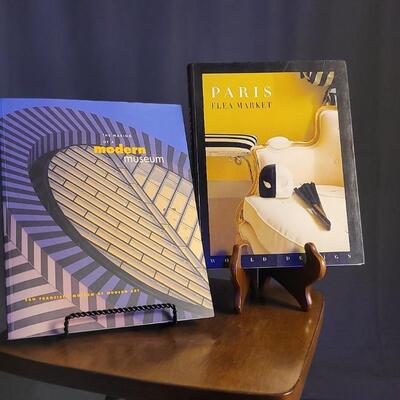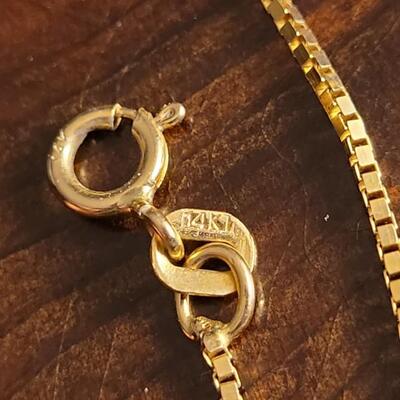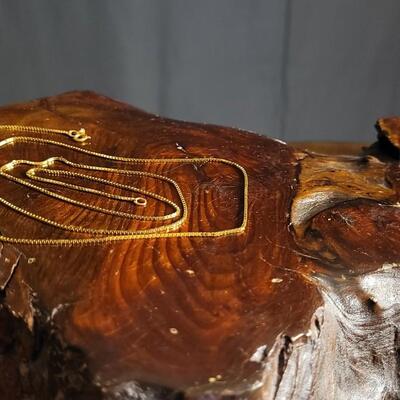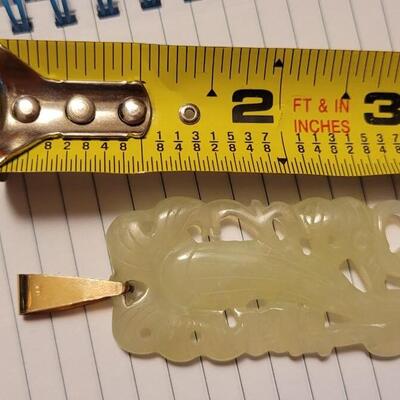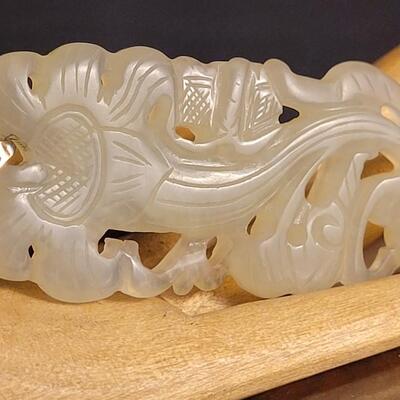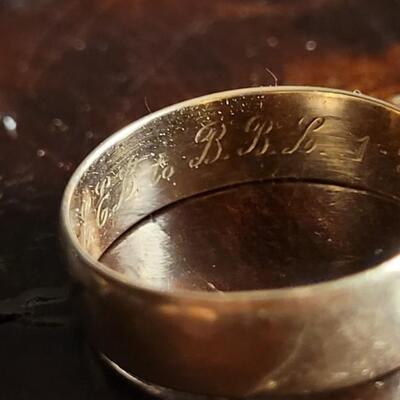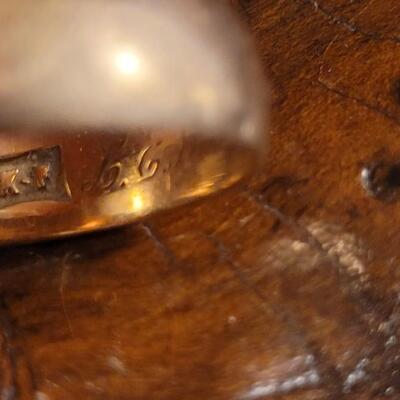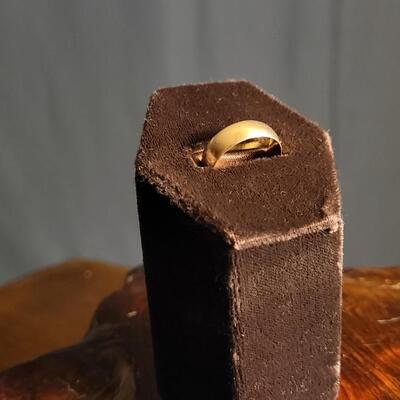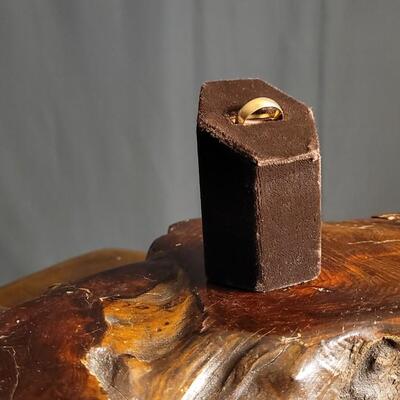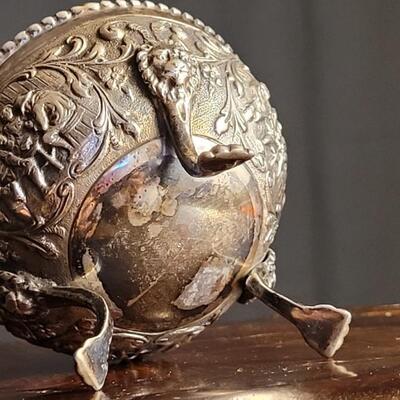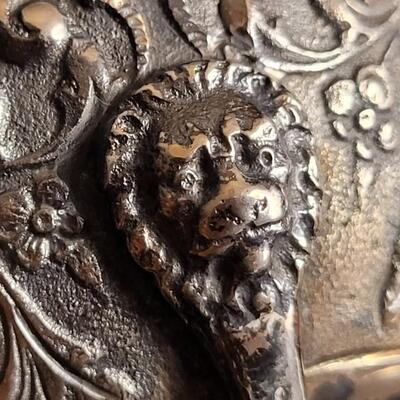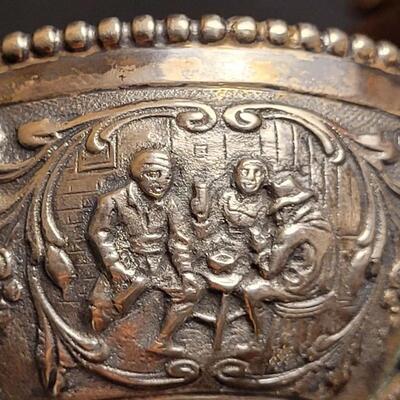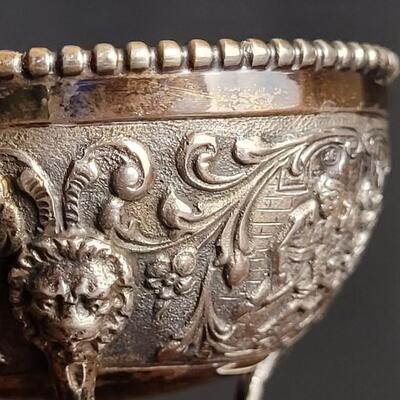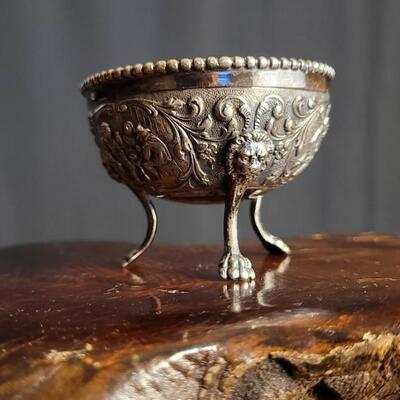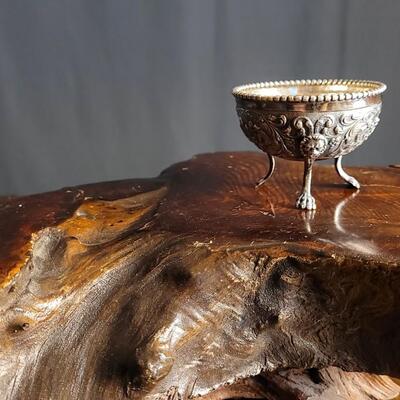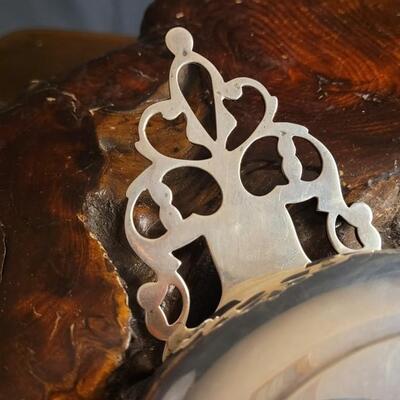-
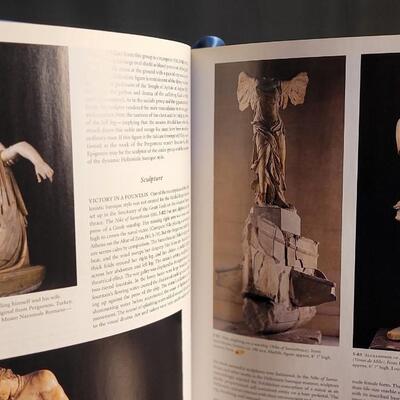
In the mid 1920's a teacher at The School of the Art Institute of Chicago had a vision to provide students and instructors with a textbook that would introduce them to the artistic legacy of not only Europe, but of the entire globe. In 1926, Harcourt Brace and Company published that vision - ART THROUGH THE AGES. Since that time, Helen Gardner's vision has been the leader in educating students about the artistic legacy of the world. For the past 75 years, ART THROUGH THE AGES has defined the introductory art history course. The intention of this classic, in Helen Gardner's words, has been "to introduce the reader to certain phases of art, architecture, painting, sculpture, and the minor arts from the remote days of the glacial age in Europe, through successive civilizations of the Near East, Europe, America, and the Orient, to the twentieth century." Now, as we begin a new millennium, we do so with the eleventh edition. This text is more accessible and easier to read for students, but does not compromise the richness of the Gardner tradition. 1110 / 2223 -

In the mid 1920's a teacher at The School of the Art Institute of Chicago had a vision to provide students and instructors with a textbook that would introduce them to the artistic legacy of not only Europe, but of the entire globe. In 1926, Harcourt Brace and Company published that vision - ART THROUGH THE AGES. Since that time, Helen Gardner's vision has been the leader in educating students about the artistic legacy of the world. For the past 75 years, ART THROUGH THE AGES has defined the introductory art history course. The intention of this classic, in Helen Gardner's words, has been "to introduce the reader to certain phases of art, architecture, painting, sculpture, and the minor arts from the remote days of the glacial age in Europe, through successive civilizations of the Near East, Europe, America, and the Orient, to the twentieth century." Now, as we begin a new millennium, we do so with the eleventh edition. This text is more accessible and easier to read for students, but does not compromise the richness of the Gardner tradition. 1111 / 2223 -

In the mid 1920's a teacher at The School of the Art Institute of Chicago had a vision to provide students and instructors with a textbook that would introduce them to the artistic legacy of not only Europe, but of the entire globe. In 1926, Harcourt Brace and Company published that vision - ART THROUGH THE AGES. Since that time, Helen Gardner's vision has been the leader in educating students about the artistic legacy of the world. For the past 75 years, ART THROUGH THE AGES has defined the introductory art history course. The intention of this classic, in Helen Gardner's words, has been "to introduce the reader to certain phases of art, architecture, painting, sculpture, and the minor arts from the remote days of the glacial age in Europe, through successive civilizations of the Near East, Europe, America, and the Orient, to the twentieth century." Now, as we begin a new millennium, we do so with the eleventh edition. This text is more accessible and easier to read for students, but does not compromise the richness of the Gardner tradition. 1112 / 2223 -
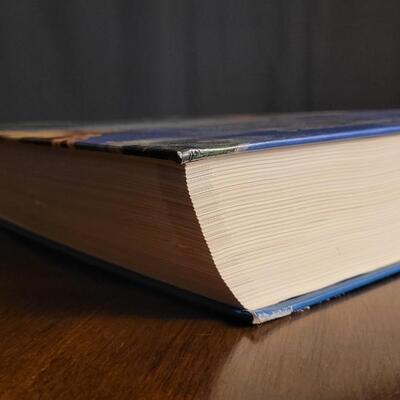
In the mid 1920's a teacher at The School of the Art Institute of Chicago had a vision to provide students and instructors with a textbook that would introduce them to the artistic legacy of not only Europe, but of the entire globe. In 1926, Harcourt Brace and Company published that vision - ART THROUGH THE AGES. Since that time, Helen Gardner's vision has been the leader in educating students about the artistic legacy of the world. For the past 75 years, ART THROUGH THE AGES has defined the introductory art history course. The intention of this classic, in Helen Gardner's words, has been "to introduce the reader to certain phases of art, architecture, painting, sculpture, and the minor arts from the remote days of the glacial age in Europe, through successive civilizations of the Near East, Europe, America, and the Orient, to the twentieth century." Now, as we begin a new millennium, we do so with the eleventh edition. This text is more accessible and easier to read for students, but does not compromise the richness of the Gardner tradition. 1113 / 2223 -
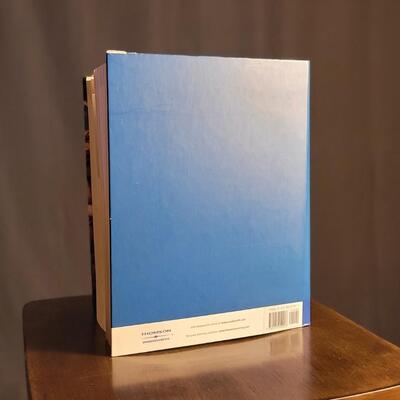
In the mid 1920's a teacher at The School of the Art Institute of Chicago had a vision to provide students and instructors with a textbook that would introduce them to the artistic legacy of not only Europe, but of the entire globe. In 1926, Harcourt Brace and Company published that vision - ART THROUGH THE AGES. Since that time, Helen Gardner's vision has been the leader in educating students about the artistic legacy of the world. For the past 75 years, ART THROUGH THE AGES has defined the introductory art history course. The intention of this classic, in Helen Gardner's words, has been "to introduce the reader to certain phases of art, architecture, painting, sculpture, and the minor arts from the remote days of the glacial age in Europe, through successive civilizations of the Near East, Europe, America, and the Orient, to the twentieth century." Now, as we begin a new millennium, we do so with the eleventh edition. This text is more accessible and easier to read for students, but does not compromise the richness of the Gardner tradition. 1114 / 2223 -
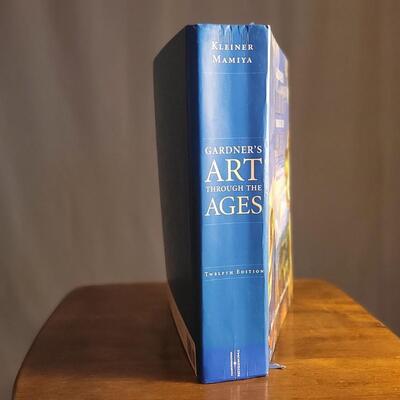
In the mid 1920's a teacher at The School of the Art Institute of Chicago had a vision to provide students and instructors with a textbook that would introduce them to the artistic legacy of not only Europe, but of the entire globe. In 1926, Harcourt Brace and Company published that vision - ART THROUGH THE AGES. Since that time, Helen Gardner's vision has been the leader in educating students about the artistic legacy of the world. For the past 75 years, ART THROUGH THE AGES has defined the introductory art history course. The intention of this classic, in Helen Gardner's words, has been "to introduce the reader to certain phases of art, architecture, painting, sculpture, and the minor arts from the remote days of the glacial age in Europe, through successive civilizations of the Near East, Europe, America, and the Orient, to the twentieth century." Now, as we begin a new millennium, we do so with the eleventh edition. This text is more accessible and easier to read for students, but does not compromise the richness of the Gardner tradition. 1115 / 2223 -
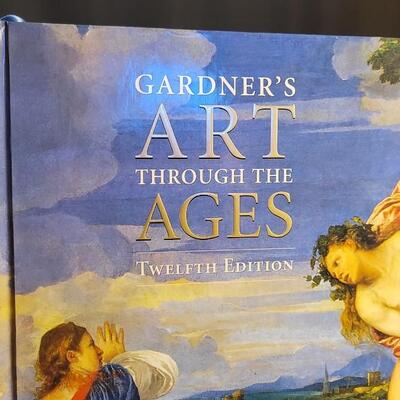
In the mid 1920's a teacher at The School of the Art Institute of Chicago had a vision to provide students and instructors with a textbook that would introduce them to the artistic legacy of not only Europe, but of the entire globe. In 1926, Harcourt Brace and Company published that vision - ART THROUGH THE AGES. Since that time, Helen Gardner's vision has been the leader in educating students about the artistic legacy of the world. For the past 75 years, ART THROUGH THE AGES has defined the introductory art history course. The intention of this classic, in Helen Gardner's words, has been "to introduce the reader to certain phases of art, architecture, painting, sculpture, and the minor arts from the remote days of the glacial age in Europe, through successive civilizations of the Near East, Europe, America, and the Orient, to the twentieth century." Now, as we begin a new millennium, we do so with the eleventh edition. This text is more accessible and easier to read for students, but does not compromise the richness of the Gardner tradition. 1116 / 2223 -

In the mid 1920's a teacher at The School of the Art Institute of Chicago had a vision to provide students and instructors with a textbook that would introduce them to the artistic legacy of not only Europe, but of the entire globe. In 1926, Harcourt Brace and Company published that vision - ART THROUGH THE AGES. Since that time, Helen Gardner's vision has been the leader in educating students about the artistic legacy of the world. For the past 75 years, ART THROUGH THE AGES has defined the introductory art history course. The intention of this classic, in Helen Gardner's words, has been "to introduce the reader to certain phases of art, architecture, painting, sculpture, and the minor arts from the remote days of the glacial age in Europe, through successive civilizations of the Near East, Europe, America, and the Orient, to the twentieth century." Now, as we begin a new millennium, we do so with the eleventh edition. This text is more accessible and easier to read for students, but does not compromise the richness of the Gardner tradition. 1117 / 2223 -
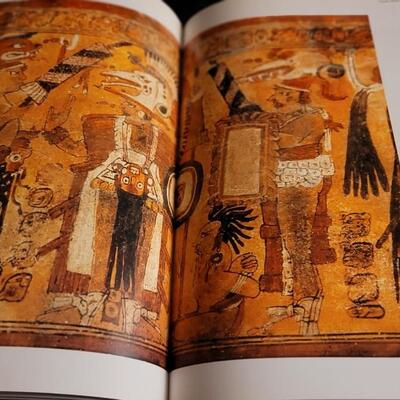
Early in their civilization, the Maya emerged as undisputed masters of astronomy, chronology, the recording of history, and mathematics. By A.D. 300 they had developed a system of hieroglyphic writing, a calendar, and the first major works of stone architecture. Their architecture was extraordinary in its marriage of astronomical, religious, civic, and engineering considerations and ideas. The Maya also excelled in decorative motifs, reliefs, and freestanding sculpture. Their painting in codices and wall frescoes and their ceramic designs are astonishing. At the height of the Maya civilization, the empire comprised lands that are now in Mexico, Honduras, Guatemala, El Salvador, and Belize. This unprecedented volume offers the most comprehensive view to date of the Maya civilization. More than thirty international scholars write on such themes as the mysterious religious myths and beliefs of the Maya, political organization, navigation and commerce, and all aspects of the culture's artistic and scientific expressions. 1135 / 2223 sold -
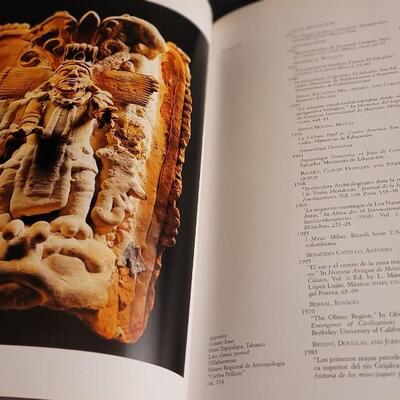
Early in their civilization, the Maya emerged as undisputed masters of astronomy, chronology, the recording of history, and mathematics. By A.D. 300 they had developed a system of hieroglyphic writing, a calendar, and the first major works of stone architecture. Their architecture was extraordinary in its marriage of astronomical, religious, civic, and engineering considerations and ideas. The Maya also excelled in decorative motifs, reliefs, and freestanding sculpture. Their painting in codices and wall frescoes and their ceramic designs are astonishing. At the height of the Maya civilization, the empire comprised lands that are now in Mexico, Honduras, Guatemala, El Salvador, and Belize. This unprecedented volume offers the most comprehensive view to date of the Maya civilization. More than thirty international scholars write on such themes as the mysterious religious myths and beliefs of the Maya, political organization, navigation and commerce, and all aspects of the culture's artistic and scientific expressions. 1136 / 2223 sold -
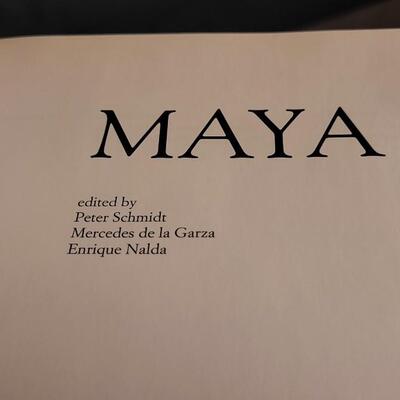
Early in their civilization, the Maya emerged as undisputed masters of astronomy, chronology, the recording of history, and mathematics. By A.D. 300 they had developed a system of hieroglyphic writing, a calendar, and the first major works of stone architecture. Their architecture was extraordinary in its marriage of astronomical, religious, civic, and engineering considerations and ideas. The Maya also excelled in decorative motifs, reliefs, and freestanding sculpture. Their painting in codices and wall frescoes and their ceramic designs are astonishing. At the height of the Maya civilization, the empire comprised lands that are now in Mexico, Honduras, Guatemala, El Salvador, and Belize. This unprecedented volume offers the most comprehensive view to date of the Maya civilization. More than thirty international scholars write on such themes as the mysterious religious myths and beliefs of the Maya, political organization, navigation and commerce, and all aspects of the culture's artistic and scientific expressions. 1137 / 2223 sold -
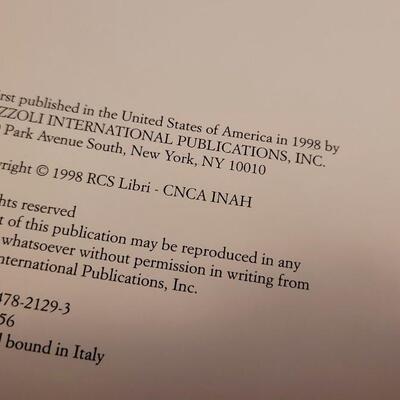
Early in their civilization, the Maya emerged as undisputed masters of astronomy, chronology, the recording of history, and mathematics. By A.D. 300 they had developed a system of hieroglyphic writing, a calendar, and the first major works of stone architecture. Their architecture was extraordinary in its marriage of astronomical, religious, civic, and engineering considerations and ideas. The Maya also excelled in decorative motifs, reliefs, and freestanding sculpture. Their painting in codices and wall frescoes and their ceramic designs are astonishing. At the height of the Maya civilization, the empire comprised lands that are now in Mexico, Honduras, Guatemala, El Salvador, and Belize. This unprecedented volume offers the most comprehensive view to date of the Maya civilization. More than thirty international scholars write on such themes as the mysterious religious myths and beliefs of the Maya, political organization, navigation and commerce, and all aspects of the culture's artistic and scientific expressions. 1138 / 2223 sold -
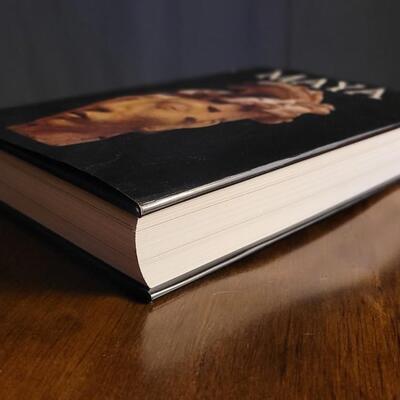
Early in their civilization, the Maya emerged as undisputed masters of astronomy, chronology, the recording of history, and mathematics. By A.D. 300 they had developed a system of hieroglyphic writing, a calendar, and the first major works of stone architecture. Their architecture was extraordinary in its marriage of astronomical, religious, civic, and engineering considerations and ideas. The Maya also excelled in decorative motifs, reliefs, and freestanding sculpture. Their painting in codices and wall frescoes and their ceramic designs are astonishing. At the height of the Maya civilization, the empire comprised lands that are now in Mexico, Honduras, Guatemala, El Salvador, and Belize. This unprecedented volume offers the most comprehensive view to date of the Maya civilization. More than thirty international scholars write on such themes as the mysterious religious myths and beliefs of the Maya, political organization, navigation and commerce, and all aspects of the culture's artistic and scientific expressions. 1139 / 2223 sold -

Early in their civilization, the Maya emerged as undisputed masters of astronomy, chronology, the recording of history, and mathematics. By A.D. 300 they had developed a system of hieroglyphic writing, a calendar, and the first major works of stone architecture. Their architecture was extraordinary in its marriage of astronomical, religious, civic, and engineering considerations and ideas. The Maya also excelled in decorative motifs, reliefs, and freestanding sculpture. Their painting in codices and wall frescoes and their ceramic designs are astonishing. At the height of the Maya civilization, the empire comprised lands that are now in Mexico, Honduras, Guatemala, El Salvador, and Belize. This unprecedented volume offers the most comprehensive view to date of the Maya civilization. More than thirty international scholars write on such themes as the mysterious religious myths and beliefs of the Maya, political organization, navigation and commerce, and all aspects of the culture's artistic and scientific expressions. 1140 / 2223 sold -
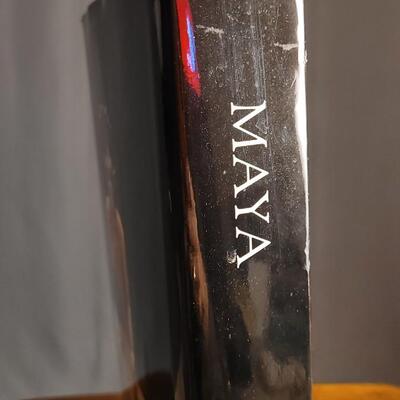
Early in their civilization, the Maya emerged as undisputed masters of astronomy, chronology, the recording of history, and mathematics. By A.D. 300 they had developed a system of hieroglyphic writing, a calendar, and the first major works of stone architecture. Their architecture was extraordinary in its marriage of astronomical, religious, civic, and engineering considerations and ideas. The Maya also excelled in decorative motifs, reliefs, and freestanding sculpture. Their painting in codices and wall frescoes and their ceramic designs are astonishing. At the height of the Maya civilization, the empire comprised lands that are now in Mexico, Honduras, Guatemala, El Salvador, and Belize. This unprecedented volume offers the most comprehensive view to date of the Maya civilization. More than thirty international scholars write on such themes as the mysterious religious myths and beliefs of the Maya, political organization, navigation and commerce, and all aspects of the culture's artistic and scientific expressions. 1141 / 2223 sold -
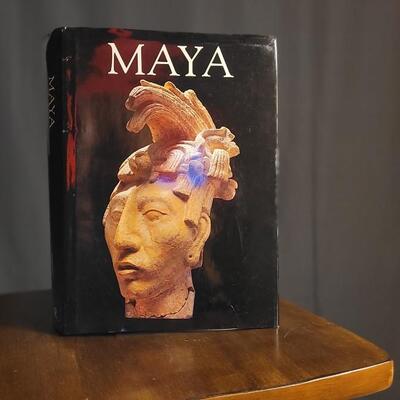
Early in their civilization, the Maya emerged as undisputed masters of astronomy, chronology, the recording of history, and mathematics. By A.D. 300 they had developed a system of hieroglyphic writing, a calendar, and the first major works of stone architecture. Their architecture was extraordinary in its marriage of astronomical, religious, civic, and engineering considerations and ideas. The Maya also excelled in decorative motifs, reliefs, and freestanding sculpture. Their painting in codices and wall frescoes and their ceramic designs are astonishing. At the height of the Maya civilization, the empire comprised lands that are now in Mexico, Honduras, Guatemala, El Salvador, and Belize. This unprecedented volume offers the most comprehensive view to date of the Maya civilization. More than thirty international scholars write on such themes as the mysterious religious myths and beliefs of the Maya, political organization, navigation and commerce, and all aspects of the culture's artistic and scientific expressions. 1142 / 2223 sold -

In this, Colorado's best-selling book of all time with 200,000 copies in print, the historic images of early west photographer William Henry Jackson capture a Colorado landscape both pristine and already dramatically affected by the onslaught on western civilization. Standing exactly where Jackson stood, and pointing his own camera in precisely the same direction, John Fielder has rephotographed Jackson's Colorado images to capture the often startling change that has occurred over the last century. The result is both breathtaking and stark, hopeful and disquieting. John Fielder describes the profound experience of traveling the state and seeing the landscape from Jackson's perspective, and reflects upon changes of the last 130 years. With 156 comparison photo pair. 1143 / 2223 sold -
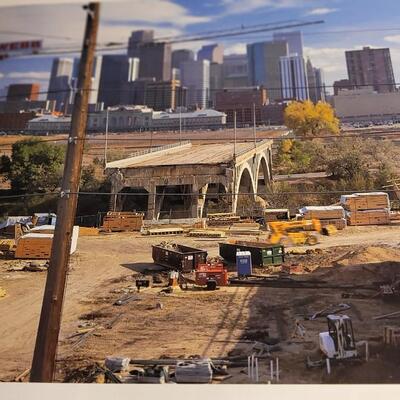
In this, Colorado's best-selling book of all time with 200,000 copies in print, the historic images of early west photographer William Henry Jackson capture a Colorado landscape both pristine and already dramatically affected by the onslaught on western civilization. Standing exactly where Jackson stood, and pointing his own camera in precisely the same direction, John Fielder has rephotographed Jackson's Colorado images to capture the often startling change that has occurred over the last century. The result is both breathtaking and stark, hopeful and disquieting. John Fielder describes the profound experience of traveling the state and seeing the landscape from Jackson's perspective, and reflects upon changes of the last 130 years. With 156 comparison photo pair. 1144 / 2223 sold -
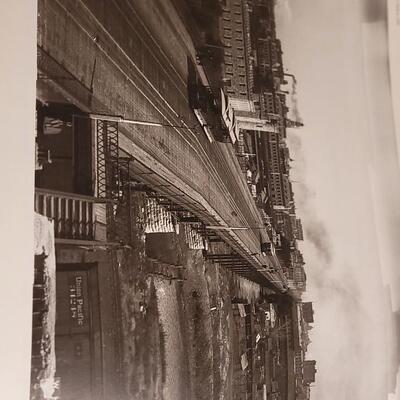
In this, Colorado's best-selling book of all time with 200,000 copies in print, the historic images of early west photographer William Henry Jackson capture a Colorado landscape both pristine and already dramatically affected by the onslaught on western civilization. Standing exactly where Jackson stood, and pointing his own camera in precisely the same direction, John Fielder has rephotographed Jackson's Colorado images to capture the often startling change that has occurred over the last century. The result is both breathtaking and stark, hopeful and disquieting. John Fielder describes the profound experience of traveling the state and seeing the landscape from Jackson's perspective, and reflects upon changes of the last 130 years. With 156 comparison photo pair. 1145 / 2223 sold -
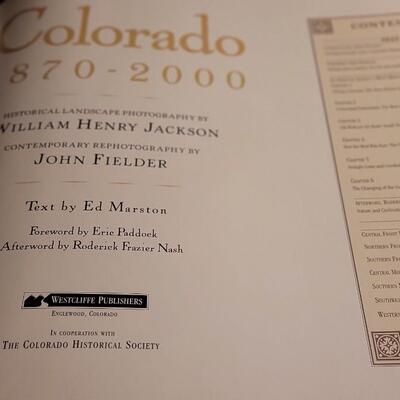
In this, Colorado's best-selling book of all time with 200,000 copies in print, the historic images of early west photographer William Henry Jackson capture a Colorado landscape both pristine and already dramatically affected by the onslaught on western civilization. Standing exactly where Jackson stood, and pointing his own camera in precisely the same direction, John Fielder has rephotographed Jackson's Colorado images to capture the often startling change that has occurred over the last century. The result is both breathtaking and stark, hopeful and disquieting. John Fielder describes the profound experience of traveling the state and seeing the landscape from Jackson's perspective, and reflects upon changes of the last 130 years. With 156 comparison photo pair. 1146 / 2223 sold -

In this, Colorado's best-selling book of all time with 200,000 copies in print, the historic images of early west photographer William Henry Jackson capture a Colorado landscape both pristine and already dramatically affected by the onslaught on western civilization. Standing exactly where Jackson stood, and pointing his own camera in precisely the same direction, John Fielder has rephotographed Jackson's Colorado images to capture the often startling change that has occurred over the last century. The result is both breathtaking and stark, hopeful and disquieting. John Fielder describes the profound experience of traveling the state and seeing the landscape from Jackson's perspective, and reflects upon changes of the last 130 years. With 156 comparison photo pair. 1147 / 2223 sold -

In this, Colorado's best-selling book of all time with 200,000 copies in print, the historic images of early west photographer William Henry Jackson capture a Colorado landscape both pristine and already dramatically affected by the onslaught on western civilization. Standing exactly where Jackson stood, and pointing his own camera in precisely the same direction, John Fielder has rephotographed Jackson's Colorado images to capture the often startling change that has occurred over the last century. The result is both breathtaking and stark, hopeful and disquieting. John Fielder describes the profound experience of traveling the state and seeing the landscape from Jackson's perspective, and reflects upon changes of the last 130 years. With 156 comparison photo pair. 1148 / 2223 sold -

In this, Colorado's best-selling book of all time with 200,000 copies in print, the historic images of early west photographer William Henry Jackson capture a Colorado landscape both pristine and already dramatically affected by the onslaught on western civilization. Standing exactly where Jackson stood, and pointing his own camera in precisely the same direction, John Fielder has rephotographed Jackson's Colorado images to capture the often startling change that has occurred over the last century. The result is both breathtaking and stark, hopeful and disquieting. John Fielder describes the profound experience of traveling the state and seeing the landscape from Jackson's perspective, and reflects upon changes of the last 130 years. With 156 comparison photo pair. 1149 / 2223 sold -

In this, Colorado's best-selling book of all time with 200,000 copies in print, the historic images of early west photographer William Henry Jackson capture a Colorado landscape both pristine and already dramatically affected by the onslaught on western civilization. Standing exactly where Jackson stood, and pointing his own camera in precisely the same direction, John Fielder has rephotographed Jackson's Colorado images to capture the often startling change that has occurred over the last century. The result is both breathtaking and stark, hopeful and disquieting. John Fielder describes the profound experience of traveling the state and seeing the landscape from Jackson's perspective, and reflects upon changes of the last 130 years. With 156 comparison photo pair. 1150 / 2223 sold -
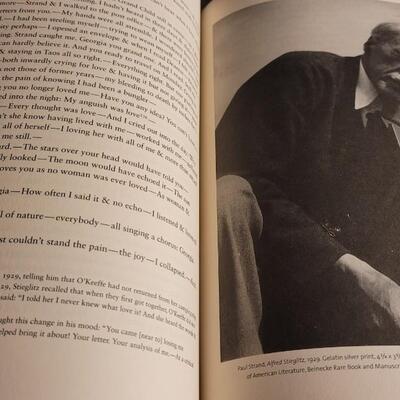
The first extensive publication from the extraordinary archive of private correspondence between two of this country's most famous artists There are few couples in the history of 20th-century American art and culture more prominent than Georgia O'Keeffe (1887–1986) and Alfred Stieglitz (1864–1946). Between 1915, when they first began to write to each other, and 1946, when Stieglitz died, O'Keeffe and Stieglitz exchanged over 5,000 letters (more than 25,000 pages) that describe their daily lives in profoundly rich detail. This long-awaited volume features some 650 letters, carefully selected and annotated by leading photography scholar Sarah Greenough. In O'Keeffe's sparse and vibrant style and Stieglitz's fervent and lyrical manner, the letters describe how they met and fell in love in the 1910s; how they carved out a life together in the 1920s; how their relationship nearly collapsed during the early years of the Depression; and how it was reconstructed in the late 1930s and early 1940s. At the same time, the correspondence reveals the creative evolution of their art and ideas; their friendships with many of the most influential figures in early American modernism (Charles Demuth, Arthur Dove, Marsden Hartley, John Marin, and Paul Strand, to name a few); and their relationships and conversations with an exceptionally wide range of key figures in American and European art and culture (including Duncan Phillips, Diego Rivera, D. H. Lawrence, Frank Lloyd Wright, and Marcel Duchamp). Furthermore, their often poignant prose reveals insights into the impact of larger cultural forces—World Wars I and II; the booming economy of the 1920s; and the Depression of the 1930s—on two articulate, creative individuals. 1151 / 2223 sold -
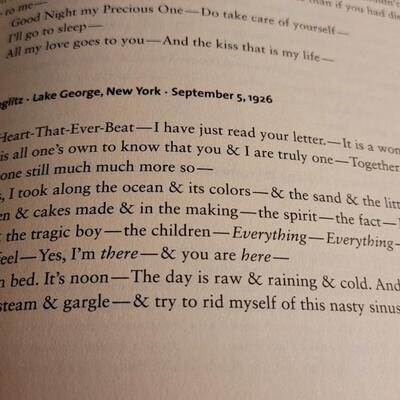
The first extensive publication from the extraordinary archive of private correspondence between two of this country's most famous artists There are few couples in the history of 20th-century American art and culture more prominent than Georgia O'Keeffe (1887–1986) and Alfred Stieglitz (1864–1946). Between 1915, when they first began to write to each other, and 1946, when Stieglitz died, O'Keeffe and Stieglitz exchanged over 5,000 letters (more than 25,000 pages) that describe their daily lives in profoundly rich detail. This long-awaited volume features some 650 letters, carefully selected and annotated by leading photography scholar Sarah Greenough. In O'Keeffe's sparse and vibrant style and Stieglitz's fervent and lyrical manner, the letters describe how they met and fell in love in the 1910s; how they carved out a life together in the 1920s; how their relationship nearly collapsed during the early years of the Depression; and how it was reconstructed in the late 1930s and early 1940s. At the same time, the correspondence reveals the creative evolution of their art and ideas; their friendships with many of the most influential figures in early American modernism (Charles Demuth, Arthur Dove, Marsden Hartley, John Marin, and Paul Strand, to name a few); and their relationships and conversations with an exceptionally wide range of key figures in American and European art and culture (including Duncan Phillips, Diego Rivera, D. H. Lawrence, Frank Lloyd Wright, and Marcel Duchamp). Furthermore, their often poignant prose reveals insights into the impact of larger cultural forces—World Wars I and II; the booming economy of the 1920s; and the Depression of the 1930s—on two articulate, creative individuals. 1152 / 2223 sold -
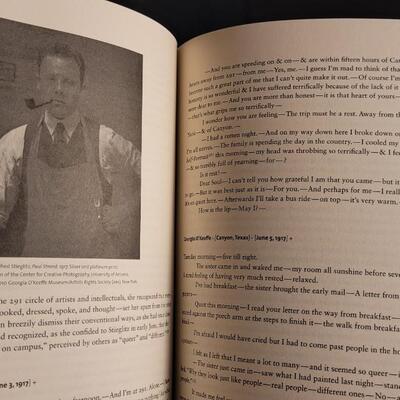
The first extensive publication from the extraordinary archive of private correspondence between two of this country's most famous artists There are few couples in the history of 20th-century American art and culture more prominent than Georgia O'Keeffe (1887–1986) and Alfred Stieglitz (1864–1946). Between 1915, when they first began to write to each other, and 1946, when Stieglitz died, O'Keeffe and Stieglitz exchanged over 5,000 letters (more than 25,000 pages) that describe their daily lives in profoundly rich detail. This long-awaited volume features some 650 letters, carefully selected and annotated by leading photography scholar Sarah Greenough. In O'Keeffe's sparse and vibrant style and Stieglitz's fervent and lyrical manner, the letters describe how they met and fell in love in the 1910s; how they carved out a life together in the 1920s; how their relationship nearly collapsed during the early years of the Depression; and how it was reconstructed in the late 1930s and early 1940s. At the same time, the correspondence reveals the creative evolution of their art and ideas; their friendships with many of the most influential figures in early American modernism (Charles Demuth, Arthur Dove, Marsden Hartley, John Marin, and Paul Strand, to name a few); and their relationships and conversations with an exceptionally wide range of key figures in American and European art and culture (including Duncan Phillips, Diego Rivera, D. H. Lawrence, Frank Lloyd Wright, and Marcel Duchamp). Furthermore, their often poignant prose reveals insights into the impact of larger cultural forces—World Wars I and II; the booming economy of the 1920s; and the Depression of the 1930s—on two articulate, creative individuals. 1153 / 2223 sold -

The first extensive publication from the extraordinary archive of private correspondence between two of this country's most famous artists There are few couples in the history of 20th-century American art and culture more prominent than Georgia O'Keeffe (1887–1986) and Alfred Stieglitz (1864–1946). Between 1915, when they first began to write to each other, and 1946, when Stieglitz died, O'Keeffe and Stieglitz exchanged over 5,000 letters (more than 25,000 pages) that describe their daily lives in profoundly rich detail. This long-awaited volume features some 650 letters, carefully selected and annotated by leading photography scholar Sarah Greenough. In O'Keeffe's sparse and vibrant style and Stieglitz's fervent and lyrical manner, the letters describe how they met and fell in love in the 1910s; how they carved out a life together in the 1920s; how their relationship nearly collapsed during the early years of the Depression; and how it was reconstructed in the late 1930s and early 1940s. At the same time, the correspondence reveals the creative evolution of their art and ideas; their friendships with many of the most influential figures in early American modernism (Charles Demuth, Arthur Dove, Marsden Hartley, John Marin, and Paul Strand, to name a few); and their relationships and conversations with an exceptionally wide range of key figures in American and European art and culture (including Duncan Phillips, Diego Rivera, D. H. Lawrence, Frank Lloyd Wright, and Marcel Duchamp). Furthermore, their often poignant prose reveals insights into the impact of larger cultural forces—World Wars I and II; the booming economy of the 1920s; and the Depression of the 1930s—on two articulate, creative individuals. 1154 / 2223 sold -
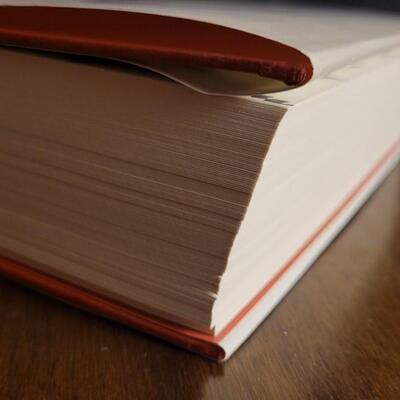
The first extensive publication from the extraordinary archive of private correspondence between two of this country's most famous artists There are few couples in the history of 20th-century American art and culture more prominent than Georgia O'Keeffe (1887–1986) and Alfred Stieglitz (1864–1946). Between 1915, when they first began to write to each other, and 1946, when Stieglitz died, O'Keeffe and Stieglitz exchanged over 5,000 letters (more than 25,000 pages) that describe their daily lives in profoundly rich detail. This long-awaited volume features some 650 letters, carefully selected and annotated by leading photography scholar Sarah Greenough. In O'Keeffe's sparse and vibrant style and Stieglitz's fervent and lyrical manner, the letters describe how they met and fell in love in the 1910s; how they carved out a life together in the 1920s; how their relationship nearly collapsed during the early years of the Depression; and how it was reconstructed in the late 1930s and early 1940s. At the same time, the correspondence reveals the creative evolution of their art and ideas; their friendships with many of the most influential figures in early American modernism (Charles Demuth, Arthur Dove, Marsden Hartley, John Marin, and Paul Strand, to name a few); and their relationships and conversations with an exceptionally wide range of key figures in American and European art and culture (including Duncan Phillips, Diego Rivera, D. H. Lawrence, Frank Lloyd Wright, and Marcel Duchamp). Furthermore, their often poignant prose reveals insights into the impact of larger cultural forces—World Wars I and II; the booming economy of the 1920s; and the Depression of the 1930s—on two articulate, creative individuals. 1155 / 2223 sold -

The first extensive publication from the extraordinary archive of private correspondence between two of this country's most famous artists There are few couples in the history of 20th-century American art and culture more prominent than Georgia O'Keeffe (1887–1986) and Alfred Stieglitz (1864–1946). Between 1915, when they first began to write to each other, and 1946, when Stieglitz died, O'Keeffe and Stieglitz exchanged over 5,000 letters (more than 25,000 pages) that describe their daily lives in profoundly rich detail. This long-awaited volume features some 650 letters, carefully selected and annotated by leading photography scholar Sarah Greenough. In O'Keeffe's sparse and vibrant style and Stieglitz's fervent and lyrical manner, the letters describe how they met and fell in love in the 1910s; how they carved out a life together in the 1920s; how their relationship nearly collapsed during the early years of the Depression; and how it was reconstructed in the late 1930s and early 1940s. At the same time, the correspondence reveals the creative evolution of their art and ideas; their friendships with many of the most influential figures in early American modernism (Charles Demuth, Arthur Dove, Marsden Hartley, John Marin, and Paul Strand, to name a few); and their relationships and conversations with an exceptionally wide range of key figures in American and European art and culture (including Duncan Phillips, Diego Rivera, D. H. Lawrence, Frank Lloyd Wright, and Marcel Duchamp). Furthermore, their often poignant prose reveals insights into the impact of larger cultural forces—World Wars I and II; the booming economy of the 1920s; and the Depression of the 1930s—on two articulate, creative individuals. 1156 / 2223 sold -

The first extensive publication from the extraordinary archive of private correspondence between two of this country's most famous artists There are few couples in the history of 20th-century American art and culture more prominent than Georgia O'Keeffe (1887–1986) and Alfred Stieglitz (1864–1946). Between 1915, when they first began to write to each other, and 1946, when Stieglitz died, O'Keeffe and Stieglitz exchanged over 5,000 letters (more than 25,000 pages) that describe their daily lives in profoundly rich detail. This long-awaited volume features some 650 letters, carefully selected and annotated by leading photography scholar Sarah Greenough. In O'Keeffe's sparse and vibrant style and Stieglitz's fervent and lyrical manner, the letters describe how they met and fell in love in the 1910s; how they carved out a life together in the 1920s; how their relationship nearly collapsed during the early years of the Depression; and how it was reconstructed in the late 1930s and early 1940s. At the same time, the correspondence reveals the creative evolution of their art and ideas; their friendships with many of the most influential figures in early American modernism (Charles Demuth, Arthur Dove, Marsden Hartley, John Marin, and Paul Strand, to name a few); and their relationships and conversations with an exceptionally wide range of key figures in American and European art and culture (including Duncan Phillips, Diego Rivera, D. H. Lawrence, Frank Lloyd Wright, and Marcel Duchamp). Furthermore, their often poignant prose reveals insights into the impact of larger cultural forces—World Wars I and II; the booming economy of the 1920s; and the Depression of the 1930s—on two articulate, creative individuals. 1157 / 2223 sold -
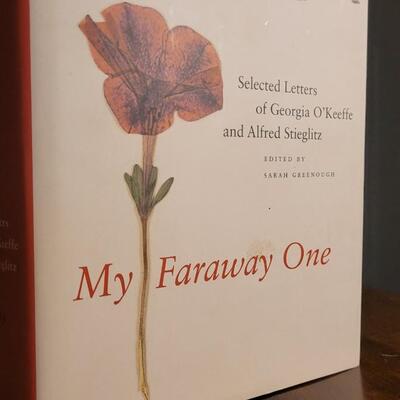
The first extensive publication from the extraordinary archive of private correspondence between two of this country's most famous artists There are few couples in the history of 20th-century American art and culture more prominent than Georgia O'Keeffe (1887–1986) and Alfred Stieglitz (1864–1946). Between 1915, when they first began to write to each other, and 1946, when Stieglitz died, O'Keeffe and Stieglitz exchanged over 5,000 letters (more than 25,000 pages) that describe their daily lives in profoundly rich detail. This long-awaited volume features some 650 letters, carefully selected and annotated by leading photography scholar Sarah Greenough. In O'Keeffe's sparse and vibrant style and Stieglitz's fervent and lyrical manner, the letters describe how they met and fell in love in the 1910s; how they carved out a life together in the 1920s; how their relationship nearly collapsed during the early years of the Depression; and how it was reconstructed in the late 1930s and early 1940s. At the same time, the correspondence reveals the creative evolution of their art and ideas; their friendships with many of the most influential figures in early American modernism (Charles Demuth, Arthur Dove, Marsden Hartley, John Marin, and Paul Strand, to name a few); and their relationships and conversations with an exceptionally wide range of key figures in American and European art and culture (including Duncan Phillips, Diego Rivera, D. H. Lawrence, Frank Lloyd Wright, and Marcel Duchamp). Furthermore, their often poignant prose reveals insights into the impact of larger cultural forces—World Wars I and II; the booming economy of the 1920s; and the Depression of the 1930s—on two articulate, creative individuals. 1158 / 2223 sold -

The first extensive publication from the extraordinary archive of private correspondence between two of this country's most famous artists There are few couples in the history of 20th-century American art and culture more prominent than Georgia O'Keeffe (1887–1986) and Alfred Stieglitz (1864–1946). Between 1915, when they first began to write to each other, and 1946, when Stieglitz died, O'Keeffe and Stieglitz exchanged over 5,000 letters (more than 25,000 pages) that describe their daily lives in profoundly rich detail. This long-awaited volume features some 650 letters, carefully selected and annotated by leading photography scholar Sarah Greenough. In O'Keeffe's sparse and vibrant style and Stieglitz's fervent and lyrical manner, the letters describe how they met and fell in love in the 1910s; how they carved out a life together in the 1920s; how their relationship nearly collapsed during the early years of the Depression; and how it was reconstructed in the late 1930s and early 1940s. At the same time, the correspondence reveals the creative evolution of their art and ideas; their friendships with many of the most influential figures in early American modernism (Charles Demuth, Arthur Dove, Marsden Hartley, John Marin, and Paul Strand, to name a few); and their relationships and conversations with an exceptionally wide range of key figures in American and European art and culture (including Duncan Phillips, Diego Rivera, D. H. Lawrence, Frank Lloyd Wright, and Marcel Duchamp). Furthermore, their often poignant prose reveals insights into the impact of larger cultural forces—World Wars I and II; the booming economy of the 1920s; and the Depression of the 1930s—on two articulate, creative individuals. 1159 / 2223 sold -

In James A. Michener the Japanese print has found its ideal commentator. Combining the finished literary style of an outstanding novelist with a mature knowledge of his subject, he is able to bring this great art form to life in words, directly communicating his understanding, love, and enthusiasm rather than obscuring his subject in pedantry. In fact, it might almost be said that he here lets the prints speak for themselves, in a wealth of magnificent illustrations and apt but unobtrusive commentary. It is only when one has finished the book that he realizes he has been conducted on a tour of three centuries of art, a tour so carefully arranged as to give a deep understanding of the history and aesthetics of Japanese prints, a new appreciation of a superlative art. The book has many other unique features. So far as consonant with his aim of presenting a full survey, Mr. Michener has illustrated the book with lesser-known masterpieces rather than with those few prints that have been reproduced almost ad nauseam. Unlike earlier books, this does not stop with the past century, but brings the subject completely up to date, introducing, in the modern Japanese print, some of the most exciting art being created in Japan--and in the world--today. The book also becomes a revealing account of the collecting of Japanese prints, with many valuable hints to collectors based upon the author's own experiences in gathering together one of the best print collections of recent years: it is a collecting field in which many hints are needed, with prices varying from $5 to $5,000 per print, and with forgeries and doubtful attributions on every hand. The final section of the book contains authoritative notes concerning each print, prepared by Richard Lane. In Mr. Michener's words, Dr. Lane "with his meticulous knowledge of Japanese and his love for ukiyo-e seems certain to become America's equivalent of the great German scholar Fritz Rumpf." It is appropriate that such a book should have been produced in Japan, and with the unstinting support of the Honolulu Academy of Arts--the increasingly important museum at the "crossroads of the Pacific"--Where Mr. Michener's collection is presently housed. No effort has been spared, especially in the faithfulness of the reproductions, to make it a worthy example of the high standards of modern Japanese bookmaking, drawing upon the same traditions and painstaking craftsmanship that produced the Japanese print. 1160 / 2223 sold -
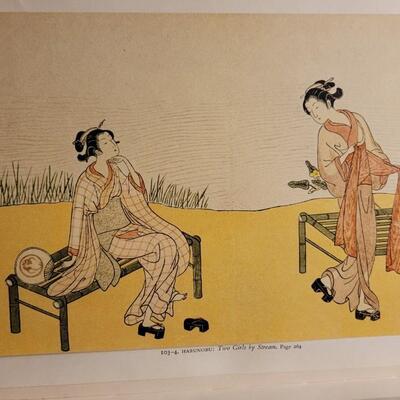
In James A. Michener the Japanese print has found its ideal commentator. Combining the finished literary style of an outstanding novelist with a mature knowledge of his subject, he is able to bring this great art form to life in words, directly communicating his understanding, love, and enthusiasm rather than obscuring his subject in pedantry. In fact, it might almost be said that he here lets the prints speak for themselves, in a wealth of magnificent illustrations and apt but unobtrusive commentary. It is only when one has finished the book that he realizes he has been conducted on a tour of three centuries of art, a tour so carefully arranged as to give a deep understanding of the history and aesthetics of Japanese prints, a new appreciation of a superlative art. The book has many other unique features. So far as consonant with his aim of presenting a full survey, Mr. Michener has illustrated the book with lesser-known masterpieces rather than with those few prints that have been reproduced almost ad nauseam. Unlike earlier books, this does not stop with the past century, but brings the subject completely up to date, introducing, in the modern Japanese print, some of the most exciting art being created in Japan--and in the world--today. The book also becomes a revealing account of the collecting of Japanese prints, with many valuable hints to collectors based upon the author's own experiences in gathering together one of the best print collections of recent years: it is a collecting field in which many hints are needed, with prices varying from $5 to $5,000 per print, and with forgeries and doubtful attributions on every hand. The final section of the book contains authoritative notes concerning each print, prepared by Richard Lane. In Mr. Michener's words, Dr. Lane "with his meticulous knowledge of Japanese and his love for ukiyo-e seems certain to become America's equivalent of the great German scholar Fritz Rumpf." It is appropriate that such a book should have been produced in Japan, and with the unstinting support of the Honolulu Academy of Arts--the increasingly important museum at the "crossroads of the Pacific"--Where Mr. Michener's collection is presently housed. No effort has been spared, especially in the faithfulness of the reproductions, to make it a worthy example of the high standards of modern Japanese bookmaking, drawing upon the same traditions and painstaking craftsmanship that produced the Japanese print. 1161 / 2223 sold -
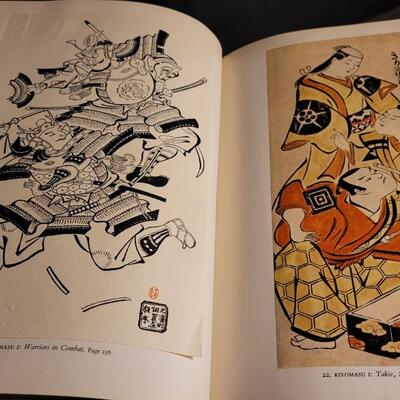
In James A. Michener the Japanese print has found its ideal commentator. Combining the finished literary style of an outstanding novelist with a mature knowledge of his subject, he is able to bring this great art form to life in words, directly communicating his understanding, love, and enthusiasm rather than obscuring his subject in pedantry. In fact, it might almost be said that he here lets the prints speak for themselves, in a wealth of magnificent illustrations and apt but unobtrusive commentary. It is only when one has finished the book that he realizes he has been conducted on a tour of three centuries of art, a tour so carefully arranged as to give a deep understanding of the history and aesthetics of Japanese prints, a new appreciation of a superlative art. The book has many other unique features. So far as consonant with his aim of presenting a full survey, Mr. Michener has illustrated the book with lesser-known masterpieces rather than with those few prints that have been reproduced almost ad nauseam. Unlike earlier books, this does not stop with the past century, but brings the subject completely up to date, introducing, in the modern Japanese print, some of the most exciting art being created in Japan--and in the world--today. The book also becomes a revealing account of the collecting of Japanese prints, with many valuable hints to collectors based upon the author's own experiences in gathering together one of the best print collections of recent years: it is a collecting field in which many hints are needed, with prices varying from $5 to $5,000 per print, and with forgeries and doubtful attributions on every hand. The final section of the book contains authoritative notes concerning each print, prepared by Richard Lane. In Mr. Michener's words, Dr. Lane "with his meticulous knowledge of Japanese and his love for ukiyo-e seems certain to become America's equivalent of the great German scholar Fritz Rumpf." It is appropriate that such a book should have been produced in Japan, and with the unstinting support of the Honolulu Academy of Arts--the increasingly important museum at the "crossroads of the Pacific"--Where Mr. Michener's collection is presently housed. No effort has been spared, especially in the faithfulness of the reproductions, to make it a worthy example of the high standards of modern Japanese bookmaking, drawing upon the same traditions and painstaking craftsmanship that produced the Japanese print. 1162 / 2223 sold -
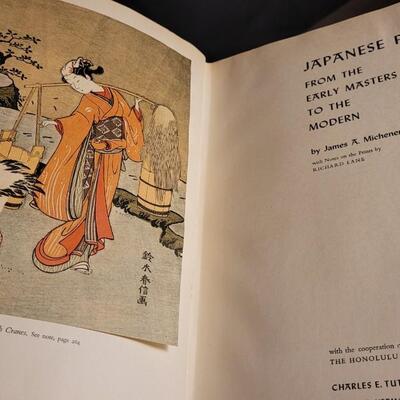
In James A. Michener the Japanese print has found its ideal commentator. Combining the finished literary style of an outstanding novelist with a mature knowledge of his subject, he is able to bring this great art form to life in words, directly communicating his understanding, love, and enthusiasm rather than obscuring his subject in pedantry. In fact, it might almost be said that he here lets the prints speak for themselves, in a wealth of magnificent illustrations and apt but unobtrusive commentary. It is only when one has finished the book that he realizes he has been conducted on a tour of three centuries of art, a tour so carefully arranged as to give a deep understanding of the history and aesthetics of Japanese prints, a new appreciation of a superlative art. The book has many other unique features. So far as consonant with his aim of presenting a full survey, Mr. Michener has illustrated the book with lesser-known masterpieces rather than with those few prints that have been reproduced almost ad nauseam. Unlike earlier books, this does not stop with the past century, but brings the subject completely up to date, introducing, in the modern Japanese print, some of the most exciting art being created in Japan--and in the world--today. The book also becomes a revealing account of the collecting of Japanese prints, with many valuable hints to collectors based upon the author's own experiences in gathering together one of the best print collections of recent years: it is a collecting field in which many hints are needed, with prices varying from $5 to $5,000 per print, and with forgeries and doubtful attributions on every hand. The final section of the book contains authoritative notes concerning each print, prepared by Richard Lane. In Mr. Michener's words, Dr. Lane "with his meticulous knowledge of Japanese and his love for ukiyo-e seems certain to become America's equivalent of the great German scholar Fritz Rumpf." It is appropriate that such a book should have been produced in Japan, and with the unstinting support of the Honolulu Academy of Arts--the increasingly important museum at the "crossroads of the Pacific"--Where Mr. Michener's collection is presently housed. No effort has been spared, especially in the faithfulness of the reproductions, to make it a worthy example of the high standards of modern Japanese bookmaking, drawing upon the same traditions and painstaking craftsmanship that produced the Japanese print. 1163 / 2223 sold -
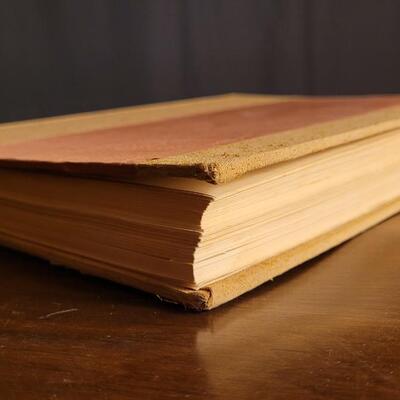
In James A. Michener the Japanese print has found its ideal commentator. Combining the finished literary style of an outstanding novelist with a mature knowledge of his subject, he is able to bring this great art form to life in words, directly communicating his understanding, love, and enthusiasm rather than obscuring his subject in pedantry. In fact, it might almost be said that he here lets the prints speak for themselves, in a wealth of magnificent illustrations and apt but unobtrusive commentary. It is only when one has finished the book that he realizes he has been conducted on a tour of three centuries of art, a tour so carefully arranged as to give a deep understanding of the history and aesthetics of Japanese prints, a new appreciation of a superlative art. The book has many other unique features. So far as consonant with his aim of presenting a full survey, Mr. Michener has illustrated the book with lesser-known masterpieces rather than with those few prints that have been reproduced almost ad nauseam. Unlike earlier books, this does not stop with the past century, but brings the subject completely up to date, introducing, in the modern Japanese print, some of the most exciting art being created in Japan--and in the world--today. The book also becomes a revealing account of the collecting of Japanese prints, with many valuable hints to collectors based upon the author's own experiences in gathering together one of the best print collections of recent years: it is a collecting field in which many hints are needed, with prices varying from $5 to $5,000 per print, and with forgeries and doubtful attributions on every hand. The final section of the book contains authoritative notes concerning each print, prepared by Richard Lane. In Mr. Michener's words, Dr. Lane "with his meticulous knowledge of Japanese and his love for ukiyo-e seems certain to become America's equivalent of the great German scholar Fritz Rumpf." It is appropriate that such a book should have been produced in Japan, and with the unstinting support of the Honolulu Academy of Arts--the increasingly important museum at the "crossroads of the Pacific"--Where Mr. Michener's collection is presently housed. No effort has been spared, especially in the faithfulness of the reproductions, to make it a worthy example of the high standards of modern Japanese bookmaking, drawing upon the same traditions and painstaking craftsmanship that produced the Japanese print. 1164 / 2223 sold -
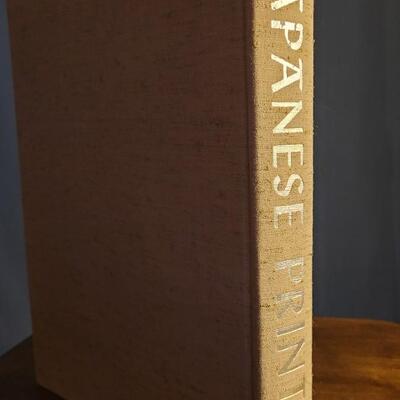
In James A. Michener the Japanese print has found its ideal commentator. Combining the finished literary style of an outstanding novelist with a mature knowledge of his subject, he is able to bring this great art form to life in words, directly communicating his understanding, love, and enthusiasm rather than obscuring his subject in pedantry. In fact, it might almost be said that he here lets the prints speak for themselves, in a wealth of magnificent illustrations and apt but unobtrusive commentary. It is only when one has finished the book that he realizes he has been conducted on a tour of three centuries of art, a tour so carefully arranged as to give a deep understanding of the history and aesthetics of Japanese prints, a new appreciation of a superlative art. The book has many other unique features. So far as consonant with his aim of presenting a full survey, Mr. Michener has illustrated the book with lesser-known masterpieces rather than with those few prints that have been reproduced almost ad nauseam. Unlike earlier books, this does not stop with the past century, but brings the subject completely up to date, introducing, in the modern Japanese print, some of the most exciting art being created in Japan--and in the world--today. The book also becomes a revealing account of the collecting of Japanese prints, with many valuable hints to collectors based upon the author's own experiences in gathering together one of the best print collections of recent years: it is a collecting field in which many hints are needed, with prices varying from $5 to $5,000 per print, and with forgeries and doubtful attributions on every hand. The final section of the book contains authoritative notes concerning each print, prepared by Richard Lane. In Mr. Michener's words, Dr. Lane "with his meticulous knowledge of Japanese and his love for ukiyo-e seems certain to become America's equivalent of the great German scholar Fritz Rumpf." It is appropriate that such a book should have been produced in Japan, and with the unstinting support of the Honolulu Academy of Arts--the increasingly important museum at the "crossroads of the Pacific"--Where Mr. Michener's collection is presently housed. No effort has been spared, especially in the faithfulness of the reproductions, to make it a worthy example of the high standards of modern Japanese bookmaking, drawing upon the same traditions and painstaking craftsmanship that produced the Japanese print. 1165 / 2223 sold -
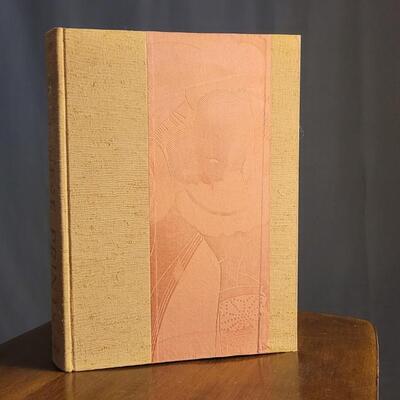
In James A. Michener the Japanese print has found its ideal commentator. Combining the finished literary style of an outstanding novelist with a mature knowledge of his subject, he is able to bring this great art form to life in words, directly communicating his understanding, love, and enthusiasm rather than obscuring his subject in pedantry. In fact, it might almost be said that he here lets the prints speak for themselves, in a wealth of magnificent illustrations and apt but unobtrusive commentary. It is only when one has finished the book that he realizes he has been conducted on a tour of three centuries of art, a tour so carefully arranged as to give a deep understanding of the history and aesthetics of Japanese prints, a new appreciation of a superlative art. The book has many other unique features. So far as consonant with his aim of presenting a full survey, Mr. Michener has illustrated the book with lesser-known masterpieces rather than with those few prints that have been reproduced almost ad nauseam. Unlike earlier books, this does not stop with the past century, but brings the subject completely up to date, introducing, in the modern Japanese print, some of the most exciting art being created in Japan--and in the world--today. The book also becomes a revealing account of the collecting of Japanese prints, with many valuable hints to collectors based upon the author's own experiences in gathering together one of the best print collections of recent years: it is a collecting field in which many hints are needed, with prices varying from $5 to $5,000 per print, and with forgeries and doubtful attributions on every hand. The final section of the book contains authoritative notes concerning each print, prepared by Richard Lane. In Mr. Michener's words, Dr. Lane "with his meticulous knowledge of Japanese and his love for ukiyo-e seems certain to become America's equivalent of the great German scholar Fritz Rumpf." It is appropriate that such a book should have been produced in Japan, and with the unstinting support of the Honolulu Academy of Arts--the increasingly important museum at the "crossroads of the Pacific"--Where Mr. Michener's collection is presently housed. No effort has been spared, especially in the faithfulness of the reproductions, to make it a worthy example of the high standards of modern Japanese bookmaking, drawing upon the same traditions and painstaking craftsmanship that produced the Japanese print. 1166 / 2223 sold
Photos 1101 - 1200 of 2223
Per page:
